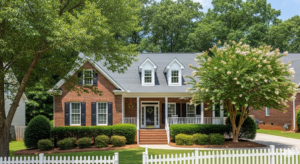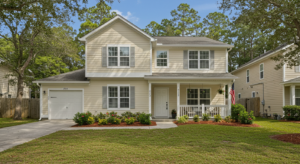Narrative
In 2024, the owners of an apartment building in Encinitas, California, undertook strategic tax planning to enhance their investment. The property consists of a single 2-story building encompassing 4,896 square feet. Originally constructed in 1970, the apartment building features 6 units designed to cater to a variety of tenants.
The building's exterior showcases a blend of modern and classic architectural elements, including durable stucco over masonry and large windows. The interior is well-appointed, featuring amenities such as high-efficiency gas wall furnaces, gas water heaters, and contemporary lighting fixtures. The property also includes a range of recreational facilities, including a concrete patio.
The owners engaged Engineered Tax Services (ETS) to perform a comprehensive cost segregation study of the property. This study aimed to identify and reclassify specific assets, enabling the acceleration of depreciation and optimizing tax benefits. This case study outlines the cost segregation strategy employed and its significant impact on the financial outlook of the property.
Objective
The primary objective of the cost segregation study was to identify and classify the apartment building's assets to optimize the owners' tax savings. By breaking down and reallocating components into shorter depreciation life categories, ETS aimed to provide both immediate and long-term financial benefits through accelerated depreciation.
Methodology
ETS employed a detailed, engineering-based approach, which included:
- Physical Inspection: conducting a thorough site visit to identify and photograph the property's components
- Document Review: examining architectural plans, construction documents and accounting records
- Cost Analysis: applying engineering principles to allocate costs to specific asset classifications
- Depreciation Calculation: calculating depreciation using IRS-accepted methods such as the Modified Accelerated Cost Recovery System (MACRS)
Learn More About Cost Segregation
Explore the benefits of cost segregation and how it can enhance your property's profitability. Dive deeper into our strategies.
Discover MoreAsset Allocation
5-Year Class Life
Total Depreciation Allocation: $936,521.82
Percentage of Total Depreciable Basis: 39.52%
5-year class life assets identified in this study include:
- Electrical systems (specialized equipment)
- Appliances (refrigerators, dishwashers, garbage disposals, microwaves, ovens/ranges)
- Furniture and fixtures (cabinets, shelving, countertops)
- Interior finishes (flooring, ceiling fans, blinds)
- Communication and security systems (telephone connections, security cameras)
15-Year Class Life
Total Depreciation Allocation: $190,735.63
Percentage of Total Depreciable Basis: 8.05%
15-year class life assets identified in this study include:
- Land improvements (paving, sidewalks, landscaping)
- Recreational facilities (concrete patio)
- Site utilities and infrastructure (storm drainage, catch basins)
27.5-Year Class Life
Total Depreciation Allocation: $1,242,742.55
Percentage of Total Depreciable Basis: 52.44%
27.5-year class life assets identified in this study include:
- Structural components (walls, doors, windows, roofing)
- Building systems (HVAC, plumbing, electrical distribution)
- Permanent fixtures (restroom fixtures, water heaters)
- Interior construction (drywall partitions, ceramic tile, stairs)
Class Life Details:
Summary
The cost segregation study for this apartment building in Encinitas, California, demonstrates the substantial financial advantages of strategic tax planning. By reclassifying property components into shorter depreciation categories, the study enabled accelerated depreciation, resulting in maximized tax savings and improved cashflow. This approach not only enhanced the apartment building's profitability but also allowed for more efficient capital management and future property upgrades. The case study illustrates how cost segregation can significantly boost the financial performance of real estate investments.
Unlock Your Tax Savings
Discover how cost segregation can maximize your tax benefits and improve cash flow. Get started today with a free consultation.
Get Your Free Consultation


